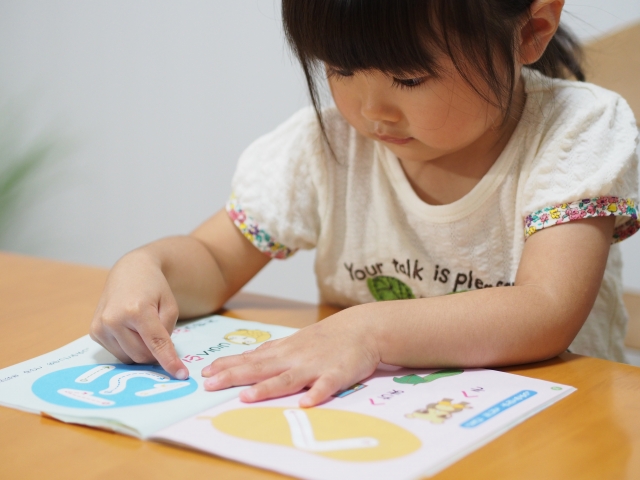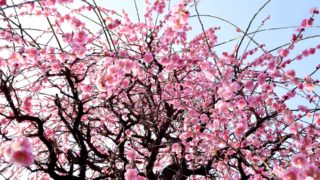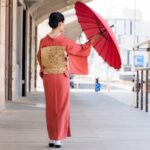What is Hiragana?
「ひらがな」Hiragana means “basic syllable.” It also is the name for the primary Japanese syllabary (syllable-based alphabet), and it’s one of the more basic Japanese writing systems.
It really is simple in its exactitude. While Japanese writing originated with Chinese characters, spoken Chinese was unrelated. Japanese scholars needed a way to accurately reflect the sounds of Japanese. That’s when hiragana appeared.
After hundreds of years, hiragana developed into the simplified set of characters seen everywhere from high literature to bidet instructions. Yet, to this day, each syllabic symbol struggles to match the Japanese sound system 1:1.
If you wish to learn the basic yet imperfect hiragana, it helps to understand countless years of its evolution and standardization.
The Hiragana Look and the Japanese Sound
- The look of Hiragana
- Every spoken Japanese syllable and its exact symbol
The look:
「ひらがなをみたことがありますか?」
Hiragana wo mita koto ga arimasu ka?
Have you seen hiragana before?
Well, this sentence might be something to bat your eyelashes at. Take a good look, though. Your eyes and eyelashes aren’t deceiving you. This is hiragana, that Japanese writing which resembles those beautiful curly eyelashes.
The hiragana aesthetic derives from Chinese calligraphy. Other Japanese writing (kanji and katakana) appears very angular, and you might have that impression of Japanese from all the Chinese character tattoos you have seen. Hiragana, however, flows from same the inkwell as 草書 sousho calligraphy. This style of calligraphy is cursive, and hiragana shares its swelling serifs.
The rounded image of hiragana went hand-in-hand with the billowing kimonos of Heiwa era aristocratic women. Its colloquial name was 「おんなで」onna-de or “woman’s hand.” Literature, the forte of stately ladies, was often inked entirely in hiragana – namely, Japan’s national novel 源氏物語Genji Monogatari “Tale of Genji” by Murasaki Shikibu.
Though women owned this style first, soon the court’s men were interested. Men had the more angular phonetic syllabary of katakana, as well as the phonetic precursor called manyogana. They could write poems and documents with these symbols – but the only way to woo a lady was to write them letters. To do that, they needed to learn hiragana.
By the 10th century, both men and women were using hiragana. Today, it’s also the first Japanese writing system children learn.
-
Everyone can learn hiragana
Each hiragana syllable is simple symbol to write. Each takes two to four strokes to complete. Ordering these strokes involves a cursive twirl of the wrist which isn’t you need to shake your fist at. Every symbol follows a few stroke order rules.
Rule one is to strike smaller top-to-bottom portions before running through left-to-right portions. “Top-to-bottom” and “left-to-right” don’t describe vertical and horizontal lines, respectively.
For example, 「ふ」fu is comprised of four parts. These portions are four separate spurts, rather than lines. Attack the two apostrophic center points top-to-bottom, then flick the last of the ink left-to-right
The second rule is that your pen must run horizontal lines before vertical lines. 「も」mo has three strokes. First, add the two dashes. Then, you swoop into that deep hook. The cursive flow of strokes results in the hallmark hiragana curve.
Third rule: approaching the hiragana 「あ」a, it’s apparent there’s more than a horizontal line or small squiggle. The t-like segment follows the horizontal and vertical order of rule one. Don’t be thrown for a loop by this trickster. The character-spanning portion – the loop – always gets thrown in last.
As you write the next Japanese classic in hiragana, stroke order will become second nature. If you’re ready to yell in Japanese, it’s as easy as 「い、ろ、は」i, ro, ha.
If you’re not ready for Japanese, that means “A, B, C.”
The simple sound and symbol:
Unfamiliar writing systems seem daunting. That is especially so when that system relates to Chinese characters. “Hiragana has a simple stroke order, but Japanese has thousands of characters to learn! How can that be easy?”
The hiragana chart only contains 46 symbols. The phonetic basis for the whole Japanese language can be found in this simple syllabary of symbols. It might underlie those thousands of kanji, but the hiragana syllabary itself is a much smaller collection to learn.
-
The Gojuuon
The chart is called the 「五十音」gojuuon which means “fifty sounds.” There may be less than fifty sound-representative symbols in the syllabary – but the gojuuon name is more than a thousand years old. The 5×10 grid held the 46 symbols for more than 10×100 years, and the name stuck.
The first row shows the vowels of Japanese. You might connect the kana and realize that this means there are only five Japanese vowel sounds! They are 「あ、い、う、え、お」a, i, u, e, o.
The following nine rows each have their unique consonant. The Japanese vowels are carried down the rows in their respective five columns. Any hiragana symbol is that given row’s consonant followed by one of the five vowels. The first column of the k row is 「か, ka, the second column is 「き」ki, third is 「くku, fourth「け」ke, and the fifth is「こ」ko.
The following rows are ordered s, t, n, h, m, y, and r:
さ し す せ そ
た ち つ て と
な に ぬ ね の
は ひ ふ へ ほ
ま み む め も
や _ ゆ _ よ
ら り る れ ろ
わ _ _ _ を
ん
Hiragana consonant/vowel combinations are straightforward. The symbol-sound relation is nearly one-to-one. But they aren’t just fifty sounds, and they aren’t just consonants followed by a vowels.
-
The hiragana ghosts of gojuuon
At the time the gojuuon was hashed out, Japanese was a different language with a different spectrum of sound. Some of the empty spaces house the ghosts of old and middle Japanese.
The “w” row once included symbols for the sounds 「ゑ」we and 「ゐ」wi. There was never a “wu,” and we and wi eventually became 「え」e and 「い」 i (first in pronunciation, then in writing when hiragana was formally revised in 1946).
The “w” articulation has largely withered to a whisper. Even now, the を wo symbol is a revenant relevant only in certain contexts, and is pronounced 「お」o as a shadow of its former self.
You may have noticed that one symbol totally defies the gojuuon, and is actually placed outside the box. It is the only syllable that doesn’t take a vowel – it is 「ん」n .
The sound formed in spoken speech after hiragana was developed – for a while, it was written with the symbol む mu. It was only given its designated hiragana in 1900, along with its unique space outside the gojuuon.
The gojuuon neatly presents every written symbol in the hiragana syllabary. It also shows how most every Japanese sound corresponds directly to a hiragana. It doesn’t echo every syllable possible – but with a dash of something extra, these symbols are sufficient to write any Japanese.
Spelling your Japanese out with han/dakuten
The ten columns don’t show the g, z, d, b, or p lines – yet those sounds do exist in Japanese. More lines of hiragana, however, would only be excessive.
English monolinguals might be surprised, but the g, z and d sounds are the voiced equivalent of k, s and t. Put two fingers against your throat and yell “ZAP!” – then, say “sap.” Notice that your throat buzzes with the “z,” and doesn’t with “s.” Otherwise, your mouth is acting the same.
To complete the gojuuon with voiced (buzzing throat) syllables, put the two「濁点」 dakuten marks on the hiragana of the k, s, t lines like you put the two fingers on your throat. These dakuten 「゛」, which look like an end quote quotation mark, represent the voiced sounds of the g, z, and d lines.
がぎぐげご
ざじずぜぞ
だぢづでど
Adding dakuten to the h line will create a b line. If you want a p line, add the 「反濁点」handakuten to the h line. A handakuten, or half-voiced mark, resembles a tiny bubble – very kawaii.
ばびぶべぼ
ぱぴぷぺぽ
-
Spelling your Japanese out with youon
Japanese living spaces are quite compact, and even hiragana have trouble finding space in the gojuuon. The Japanese language has contracted sounds – short combinations of kana – that have managed to economize their own space in the living and written language.
With hiragana, the standard Japanese contractions are called 「拗音」 youon. While hiragana represent distinct syllables, a consonant/vowel pairing, youon allow two separate hiragana to occupy the same syllable.
Traditionally, outside of loan words from other languages, these contractions only involve a consonant followed by a y sound. These contractions are achieved by adding a small hiragana from the y line to a normal-sized hiragana from the i column. As a result, you get a name like 「きゃりぱみゅぱみゅ」Kyary Pamyu Pamyu.
きゃ きゅ きょ ぎゃぎゅぎょ
しゃ しゅ しょ じゃじゅじょ
ちゃ ちゅ ちょ ぢゃぢゅぢょ
にゃ にゅ にょ
ひゃ ひゅ ひょびゃびゅびょぴゃぴゅぴょ
みゃ みゅ みょ
りゃ りゅ りょ
Spelling your Japanese out with youon
The youon create kawaii names, but they’re not the only diminutive rendition of full-sized hiragana. A small tsu is another choice. Small tsu doesn’t represent sound, but rather a pause in sound.
These tiny tsu are called 促音 sokuon, and they function similar to a music rest.
In English, you can hear this “sound” in the double consonant of a word like happy. The air behind the word takes a pause on the first p, and powers up to an explosion in the following p consonant.
A definite winning example of the double consonant is 「きっと」kitto – a word which means “definitely.” The sokuon might seem cute, but they pack a mean one-two (double) consonant one-two punch.
So long such long vowels
Hiragana and the Dakuten, yoon and sokuon make writing which correspond one-to-one with spoken Japanese.
Nearly.
Memorizing spelling is largely unnecessary, and kanji character memorization replaces the school day glories of spelling bees, but there is occasion for confusion.
Double vowels make variations in writing where there is no variation in sound. For the most part, to make a long vowel, you augment hiragana with a hiragana vowel from the matching column, like the 「ね」ne plus 「え」e of「おねえさん」.
The 「お」 o column tries to “o” around the rules, though. When these hiragana aren’t matching with another “o” they’re pairing up with 「う」u. This affair announces itself most obviously with the 「よ」yo and 「う」u of 「おはよう」- hello. The irregular 「う」u writing of other words require a touch of memory.
The hiragana syllabary is “fifty sounds,” and the focus of the writing system is to correspond directly to the sounds of Japanese. They are unlike English letters, which have sounds that greatly vary according to context, and unlike Chinese characters which convey meaning but don’t directly convey sound. As the basic syllable of Japanese, understanding hiragana strikes at the spirit of Japanese speech.
Hiragana’s limited written use and when spoken Japanese outpaces the Hiragana syllable
- Between the lines: where the universal sound symbols of hiragana are confined in writing and grammar.
- Shift in the spoken: Japanese exceptions to the hiragana syllables.
Between the lines – Grammar
The host of hiragana has now been seated at your desktop. Language study has been delineated with clarity. You know how to spell – apple isn’t a confusing a-p-p-l-e, and「りんご 」is simply「り•ん•ご」.
Japanese now seems easy.
「やっほー」 yahhoo! Hiragana was once used to write novels, but it’s sole use in literature has now been consigned to storybooks. If you want to know Japanese writing, you must learn hiragana’s place in grammar and among the other writing systems.
All children learn hiragana and its brother syllabary katakana (which covers the same exact sounds and also uses dakuten, yoon, and sakuon). As they go through school and reach adulthood, they also learn thousands of kanji, which are used for most nouns, verbs and adjectives. How does hiragana help – is it necessary?
Hiragana is universally understood. As such, many words are partially written in hiragana, and adding too much kanji in place of hiragana would only make stuffy-looking text.
Still, Murasaki Shikibu’s Tale of Genji is a tome of terrific tonnage, and it heaves hiragana. While it’s a marvel, a novel of courtly dotage and intrigue, modern Japanese would see the mass of hiragana as hard-to-read. Not for the stories, but for an unending sequence of conjoined hiragana. How would you differentiate the words? In written Japanese, there are no spaces.
In the face of such hiragana, the daunting thousands of kanji actually help. Each kanji has a collection of related meanings and readings based on its general idea. Nonetheless, Japanese has thousands upon further thousands of words, so there is still kanji conundrum to contend with.
Circuitous and curvilinear as the syllabary, hiragana again writes the resolution to this story.
-
Hiragana as Furigana
If there is a kanji either too advanced for a readership, or generally (and legally) considered rare, you will find hiragana attached. This hiragana is called 「振り仮名」furigana, and is used to spell out the reading of unfamiliar kanji. In a beginner’s Japanese textbook, nearly every kanji will have it.
Furigana is so widespread, you’ll find it on signage and in newspapers. There’s even a legal mandate to include this hiragana in the papers for any word unlisted in the 1,945 common use kanji.
Hiragana is a cursive mandate for many textual templates. Wherever it’s found, you can distinguish furigana by its frequent italicization. It also appears above horizontal text and to the right of vertical writing.
-
Hiragana as Okurigana
If you do pick up a newspaper, you will still see hiragana within the alignment of each sentence. While furigana hovers like a crow, this hiragana tails like a pigeon. Pigeonhole this hiragana as: 「送り仮名」 okurigana.
While kanji forms the stem of most adjectives and verbs, hiragana designate both adjective types and verb conjugations. They tail the more complex characters in tailored form. The regularity of these types and conjugations assures that a simple skim of a text reveals word breaks – no spaces necessary, thanks to hiragana.
Adjectives end either with furigana「-しい」shii or 「-な」na.
「新しい本」means “new book” and 「綺麗な図書館」 means “pretty/clean library.” The hiragana bookends the noun and adjective kanji.
This pattern follows for verb phrases, which in their basic form end with ます masu. 「本を読みます」 means “(I) read books,” and 「図書館に行きます」 means “(I) go to libraries.”
-
Hiragana as conjunctions
Other than hiragana-jugations, conjunctions are another written function of hiragana. Japanese conjunctions are occasionally a form of verb (like contracting a verb with “and” or “then”). Many times, they are single hiragana. 「川と池」 kawa to ike means “rivers and ponds,” while 「水か酒」mizu ka sake means “water or alcohol.”
Like liquids, the hiragana element of isolated syllables overlap with another grammatical concept. These are the infamous Japanese particles.
-
Wo, particles.
The hiragana 「は」ha,「に」 ni, 「へ」 he, 「が」ga, 「で」de, and「を」 wo are all particles. Skimming through any text from Final Fantasy dialogue to a modern iteration of Tale of Genji will rack up an ample amount of these particles. While 「で」means “at” and 「に」,「へ」 mean “to,” there is no verbal translation for the others.
「は」ha announces the topic of a sentence, and can be related to English “about,” or as something of a colon “:” . 「は」ha roughly functions as “about myself:”. It simply presents the context of any information in the following sentences.
While that’s a Japanese convention, it’s not so much an English convention. That’s why 「は」ha is often untranslated.
「お酒は、焼酎が好きです」
Means “(about) sake: (I) like shochu.” (It doesn’t mean sake likes shochu).
「を」wo marks the object of a verb, something like an inescapable target. There’s no rough translation; it exists to clarify what the verb is acting on.
「水を飲みます。」
“(I) drink water.” 「を」Wo follows「みず」 mizu “water,” because 「飲みます」 nomimasu “drinking” happens to the water.
Another topic marker 「が」ga relates new or emphasized information as the object of the sentence. There is no written translation, but imagine ga emboldening the word it follows
「お酒がすきです。」
“(I) like sake.”
For English native speakers, the idea of particles is foreign. Japanese requires these tasty grammatical morsels, though. They’re required because Japanese is high context, meaning you can drop clauses out of a sentence, and you can also rearrange the sentence to a degree. If English had these hiragana particles, it could do the same.
Whether scaffolding words as spelling or an ending, or falling in as a small particule of grammar, hiragana strokes are the sinews of written Japanese. The complexity of writing outmatches the sound-based system, and so it coordinates with the other systems.
Shift in the Spoken: Development of the language and simplification of sound
Every spoken Japanese syllable is represented fairly well by hiragana. In writing, it is less representative of every Japanese word, yet its underlying worth functions with a connective quality. Holistic hiragana seems fairly flawless.
Yet hiragana is still weathered by the flow of the spoken language and levying of standardizations for Japanese grammar. This creates certain discrepancies between sound and symbol. To master the sounds that hiragana seeks to symbolize, you have to return to the social settings and speech itself.
-
Grammar and Peculiar hiragana pronunciations
Before 1946, conjugations for verbs used hiragana contrary to their sound – for example「ふ」fu would be written as a verb ending yet pronounced 「う」 u. The writing convention was formal, and didn’t effect the sound. The state wished to standardize the sound system, and most of these askew sound/symbols were set right.
Standardization be bastardization! Despite standardization of hiragana, the particles ha, he, and wo were not altered from their grammatical function. In a 1985 orthography revision, they were designated for preservation.
As single hiragana that may not seem impressive. However, the symbol 「を」 wo only functions as a particle, and is always pronounced o like 「お」– it has no spoken use, and only designates a grammar point.
Unlike the hiragana 「を」 wo, 「は」ha and 「へ」 he are pronounced ha and he. That is, unless they are particles. Then, they are pronounced like 「わ」 wa and 「え」e.
Outlying sounds coexist within the gojuuon chart itself. The i column of t and s rows are pronounced “chi” and “shi,” rather than “ti” or “si.” Then, when 「ち」chi and 「し」shi are voiced with dakuten, the two separate hiragana become the identical “ji” sound.
The voiced version of 「つ」 tsu and 「す」 su also converge in sound, spoken as “zu.”
「じ」,「ず」and「ぢ」,「づ」are used as furigana for the Japanese and Chinese origin readings of kanji, respectively.
Phonetically, they’re identical.
Hiragana has been streamlined to accommodate both sound symbolic and grammatical purposes. No matter how close it’s allowed to show each Japanese syllable, there are aspects of spoken Japanese that it can’t capture.
-
Hiragana and absent intonation
Japanese has many words, and few sounds. One way to differentiate words written with homophones is with intonation. Kami and kami are written with the same hiragana – why not pronounce them the same way?
If the pitch of mi is a slightly higher tone than ka, the meaning is 「神」/「かみ」kami “god” – as if you’re looking up in praise. If the pitch of ka is the same as mi, flat and unchanging, the meaning is 「紙」/「かみ」kami “paper”.
Unlike Chinese, the pitch changes between syllables, rather than within a syllable. Hiragana was derived to only capture a single syllable sound – not the cadence between spoken syllables.
「ん」n is an apparent outlier on the gojuuon chart. It also functions in a unique way, and without a vested vowel, its sound can be affected by following consonants. It morphs into an m sound if the next hiragana starts with any syllable beginning m, b, p.
Even the rampant vowels of Japanese are muted to a minimum on some occasions. If you have any i or u vowels between voiceless (non-dakuten, non-m/n consonant) sounds, they evaporate out of the mouth in spite of the humid Japanese climes.
「浅草がすきです」
The hiragana reads Asakusa ga suki desu, but it sounds like Asak’sa ga s’k’ des’.
The hiragana heart of Japanese and the growing spoken language
- The basic syllable of hiragana is a certain script designed for each Japanese sound 1:1
- Hiragana designates grammatical functions and clarifies more complex Japanese
- Spoken Japanese occasionally deviates from the hiragana syllable, because of grammar development and the evolution of the spoken word and standardization
Hiragana has a sprawling history. From its extravagant origins in Chinese text and its favor in literature to its simple metric of Japanese sound and basic learning, it has been many things. From the beginning, it has stood for the Japanese syllable.
The cursive system has survived the upswells of typhoon tempests, and has become a vital part of textual templates. It builds grammar, dressing kanji verbs and nouns as elegantly Japanese as kimono. Its appearance has been smoothed through the years – the curious pronunciation of particles remaining as intentional kinks.
As hiragana syllabary sits Japanese sounds comfortably, the living language nonetheless continues to shift. As Japanese is spoken syllable to syllable, its hard for hiragana to mold to the music of Japanese. Nonetheless, hiragana marks each separate syllable with remarkable regularity.
After all, hiragana developed as a way to capture Japanese sound to inscribed syllables, and one to one.



